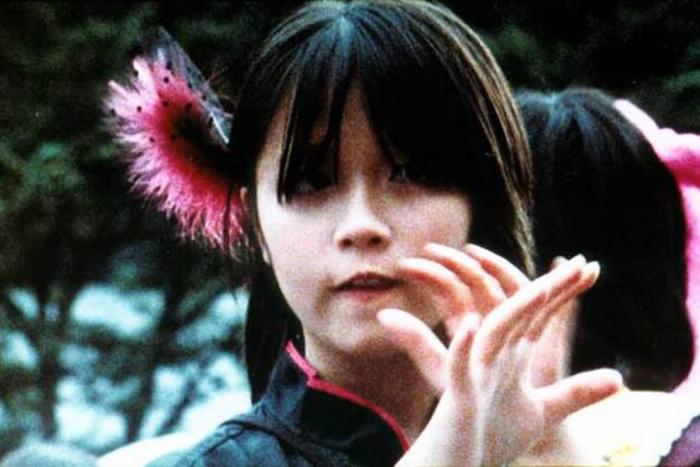My favourite love story is that of the philosopher John Stuart Mill and Harriet Taylor. Although she was married to another man for most of their relationship, they carried on a public affair for over 20 years. Mill, an early champion of women’s rights, considered Taylor his intellectual equal and credited her (effusively) as his collaborator. After her husband died, they married; and when she died, seven years later, Mill moved into a house by her grave in Avignon. “Five people came to his burial,” writes Adam Gopnik, of his death 15 years hence. “This was the one place he wanted to be, with Harriet, in the tiny cemetery outside Avignon, where he could rest beside the one love he had had.”
I first heard this story in grade 12 philosophy class, and it’s an ideal I’ve held since. I’ve always idolized couples who seemed to make each other better, or who inspired each other to make better work. I loved the notion of a perfect intellectual friendship with fucking—or at least comfort during the flu—and of a unified personal and creative life. Reading Sarah Thornton’s Seven Days in the Art World, I got misty-eyed at her account of Jerry Saltz and Roberta Smith: “When I asked the pair how it felt to be the king and queen of criticism, Saltz declared, ‘We’re just a couple,’ while Smith confessed, ‘We have an amazing time. We’re able to do as much as we do because writing doesn’t mean we have to be alone. We’re just totally in it.”
It doesn’t work like that, of course, at least not for most of us. It’s hard enough just to find someone whose company is preferable to your own, much less someone whose work is a perfect complement to your work, much much less someone who also keeps an amenable sleep schedule. When relationships succeed, they succeed because 89,233 interpersonal factors magically sort themselves out, and because of some loopy 11th-dimension stuff that no one really understands. They don’t work just because one’s notes on the other’s draft were really excellent. (Janet Malcolm married her editor at The New Yorker, but then she’s Janet Fucking Malcolm.)
If you do find someone with similar goals, it helps if your careers grow, or your egos shrink, in unison. (This essay by Kathryn Chetkovich, Jonathan Franzen’s partner, is incredibly brave and it scared the living shit out of me.) Not just because of the crushing humiliation of having to sleep with someone who’s killing it while you’re struggling, but because when you’re struggling, it’s nice to be able to think about something else. I haven’t quite gotten there yet—I’ve never had a work problem that I didn’t unload onto whoever I was dating at the time—but having been single for a while, I’m starting to see the value in a genuine personal life.
Growing up is not about surrendering your ideals so much as learning how to recognize them. And love is both less and more than I thought it would be, because love is actually 30 different things, each as potentially gratifying as the next, but in different ways. The fact that we use the same word for passion and companionship, for nonsexual fondness and bonds of duty, speaks to how much faith we put into the concept of just one person. Don’t get me wrong: I have no objection to monogamy or its alternatives, in terms of how people structure their relationships. But that’s my point: every relationship contains its own terms, because every relationship glitches differently. And that goes for friendships as well as romances, and it also goes for solitary lives.
My parents got together just out of their teens. They’re very different people, and they’ve had their fights, and, as most kids do, I think they’re nuts. But they’ve made it work somehow, and I admire them, and I tear up when I think about how much they love each other. I was the same age when I started dating my first serious boyfriend. We became very different people, and we had our fights, and we broke up, and it was one of the best things I ever did. I’ve had no serious relationships since. Instead, I’ve worked a lot, and had great and passionate and occasionally volatile friendships, which, collectively, have been every bit as fulfilling as a relationship would have been. It took me a while to figure that out.
The problem with romantic ideals is that they’re single-minded: they elevate partnerships and denigrate friendships. Some friends you bowl with, other friends you sleep with, and some you meet up with in diners when you’re both on deadline. In luckier times, you have at least one friend with whom you share creative and intellectual chemistry that inspires better work from the both of you. You’re more likely to find this in a friend than in a potential partner, because friendships don’t require 89,232 other things to work, and it doesn’t matter whether or not you go to bed at the same time.
Of course, most of your friends are still attached to their romantic ideals, as most people are, no matter what they say. And most of your friends will probably get married and maybe have kids, while you may not, whether or not that’s your choice.
Had Taylor and Mill never married, I imagine their friendship would be just as inspiring. I think about Samuel Johnson’s deep, platonic affection for his friend Charlotte Lennox, the brilliant but exasperating author of The Female Quixote. He threw a party to celebrate the publication of her first book, serving lemonade and “a magnificent hot apple-pye... stuck with bay leaves,” and he crowned her with a laurel wreath. Friends do that sort of thing. But God help you if you get the flu.
--
Image: portrait of Harriet Taylor Mill by unknown artist.






